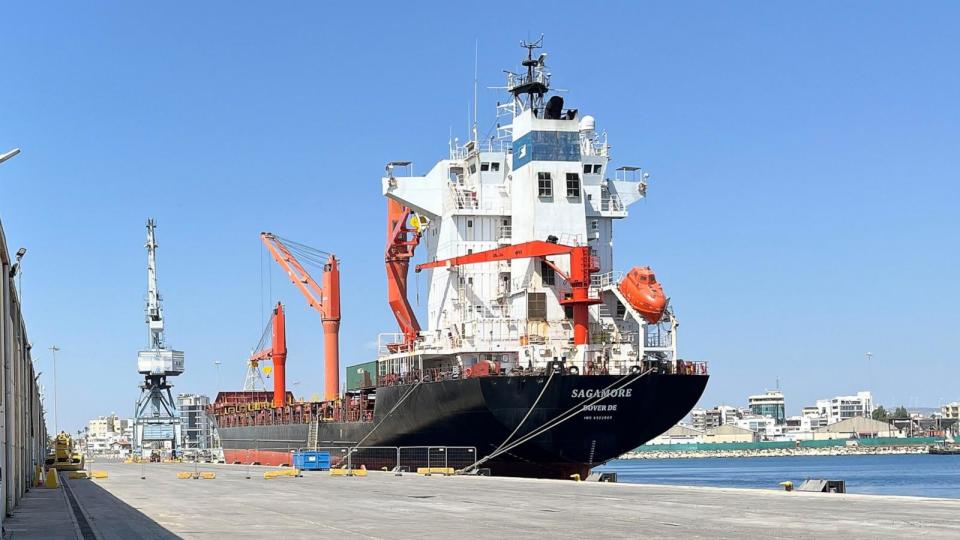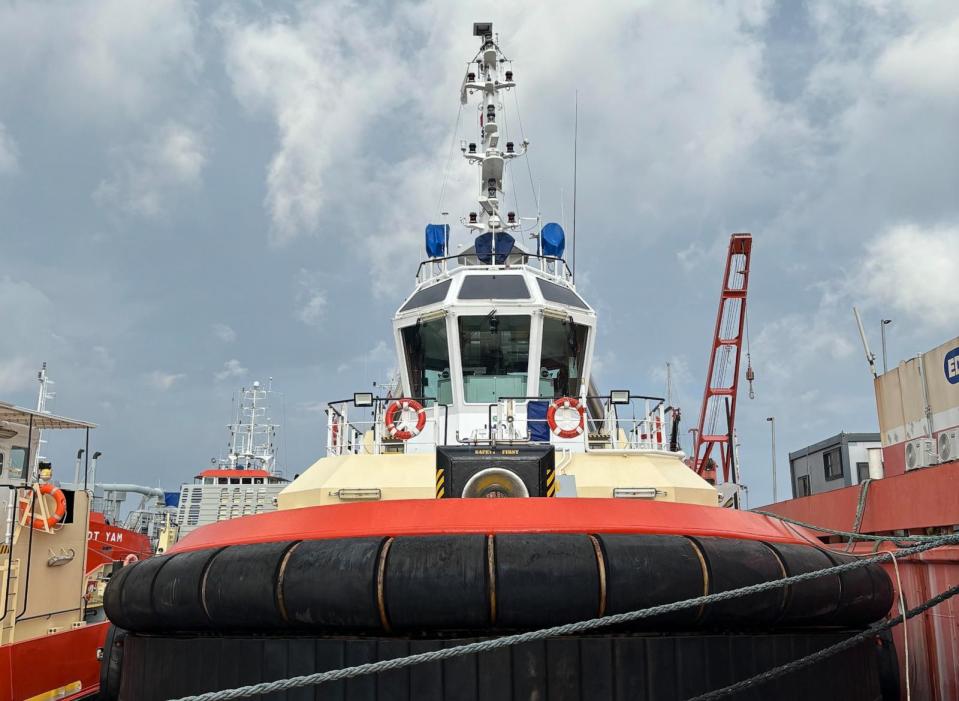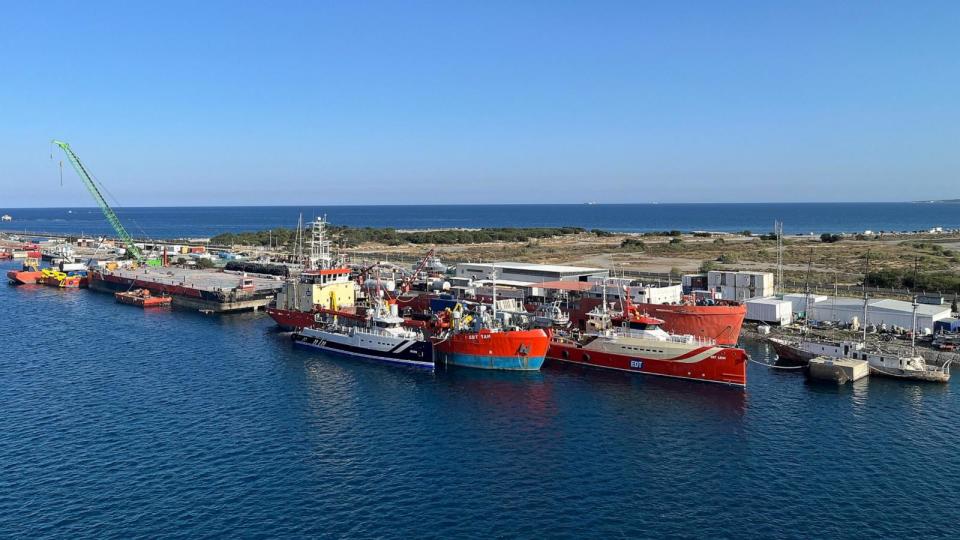Biden's military pier to deliver aid to Gaza off to slow start
With the crisis in Gaza worsening, a private humanitarian group staffed with former military and intelligence officials stumbled upon a surprising hurdle in its efforts to help the United States government rush supplies to Palestinian residents by boat: For several weeks, there was little to no aid ready to move.
Fogbow, an independent outfit, said it had expected there would be large-scale donations of food, medicine and other supplies piling up at a port in Cyprus, where aid was supposed to be staged and screened by the Israelis before being shipped to the Gaza coast via a U.S.-built pier known as JLOTs, or the Joint Logistics Over-the-Shore capability.
When that aid didn’t materialize, Fogbow officials knocked on the doors of several local flour mills in Cyprus -- eventually purchasing nearly 2.5 million pounds of flour that it now plans to ship in early June.
"It's not the capacity of JLOTs," said Mick Mulroy, an ABC News contributor and former assistant secretary of defense for the Middle East who's one of the co-founders of Fogbow. "It's that there's not enough aid" to move, he said.

Two months after President Joe Biden announced his vision of the floating pier off Gaza that would enable some 2 million meals delivered a day, the $320 million project has been off to a bumpy start. The pier, initially envisioned as a 90-day project, first struggled with bad weather that delayed its placement, as well as security concerns tied to Israel's operations in the southern Gaza city of Rafah.
Since becoming operational nearly a week ago, the pier's new complicating factors appear to be convincing countries to step up donations into Cyprus and enabling aid workers safe passage to distribute the supplies.
Of the 695 metric tons of aid that's been shipped in recent days -- roughly 1.5 million pounds -- the United Nations' World Food Program said it has struggled to get much of it to warehouses because of security issues. On Tuesday, U.N. spokesman Stephane Dujarric told reporters that 11 of the 16 trucks leaving the pier last weekend were looted by desperate residents.
The U.S. also announced it was suspending food distribution in Rafah this week "due to lack of supplies and insecurity."
Gaza aid timeline: How the hunger crisis unfolded amid the Israel-Hamas war
Jake Sullivan, the president’s national security adviser, told reporters Wednesday that he does not see the pier as a failure.
"Aid is flowing. It is not flowing at the rate that any of us would be happy with because we always want more, but we are actually seeing good cooperation between the U.S., the IDF [Israel Defense Forces], the U.N. and other humanitarian organizations to ensure that aid goes from that pier to innocent people in need," he said.
USAID has not said how much aid is in Cyprus now, other than to note that "thousands of tons" of aid is "in the pipeline."
"We anticipate more assistance from additional countries and organizations utilizing and steadily scaling up the maritime corridor soon after it is operational," USAID said in a recent statement provided to ABC News.

Secretary of State Antony Blinken told lawmakers Tuesday that "deconfliction" between aid groups and the IDF remains a serious problem, referring to steps to coordinate logistics to reduce the risk of friendly fire.
"There are good procedures in place, but we continue to see some problems at the operational level, at the tactical level where a given unit may not know in real time that a convoy is supposed to go through," Blinken told the Senate Appropriations Committee.
"So we're working on significantly improving that, finally fixing that to make sure that humanitarians can proceed safely," he said.
Pentagon's temporary pier off Gaza is ready to begin delivering aid
Pentagon spokesman Maj. Gen. Pat Ryder told reporters Tuesday that aid movement has resumed with the U.S., Israel and U.N. working on identifying "alternative routes for the safe movement of staff and cargo."
Ryder and other officials say the military is employing a "crawl, walk, run" strategy that starts out slow and builds capacity with time.
In the meantime, with its three empty barges on hand and nothing to move, Fogbow officials this month turned to buying their own shipment of aid.

Mulroy said the hope is that international donors and aid groups will offer up more supplies once they see a functional operation.
"This pier has a lifespan ... and the conditions are not great," Mulroy said. "So the longer that we don't have large quantities of aid going in, the more we're wasting this opportunity."
ABC News' Luis Martinez contributed to this report.
Biden's military pier to deliver aid to Gaza off to slow start originally appeared on abcnews.go.com

